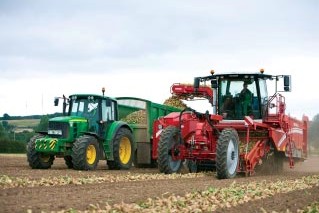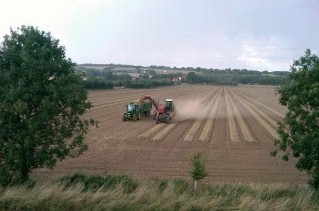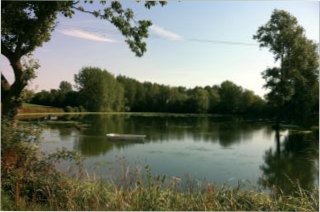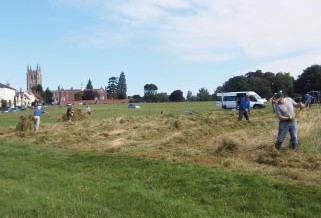Stour Valley Farming
We as a family have been farming on land in the Stour Valley for 65 years as the Rix’s and prior to that my late mother’s family the Page’s who held many tenancies prior to the first war.
The natural topography, geography and geology of the Stour River Valley has created a very diverse landscape and pattern of land use. The changing soil type and slope creates both opportunities and constraints to land use and has restricted the rather mono-cultural farming seen in other parts of the country.
The river valley typically offers good summer grazing for sheep and cattle along the flood plain river meadows either side of the Stour. A very good area of sandy loams form the lower slopes of the valley with excellent growing potential for a wide range of crops. Rising further up the escarpment the land rises quite quickly with some steep slopes and a very changeable soil type which restricts the farming pattern to less intensive cereal crops or grassland grazing.
This diversity of opportunities has been very instrumental in steering our own choice of farming enterprises and created our current range of activities.
Water availability has another strong influence. Being situated in one of the lowest rainfall areas of the country, it has influenced our patterns.
Investment in a very large number of water storage reservoirs both by us and many other land owners has allowed the winter excess flow to be harvested and then applied as irrigation during the drier summer months.
Sustainable farming is wholly dependent on diverse crop rotations and is most easily practised when the land is of sufficient quality to grow a wide choice of crops.
Within our own system we have a rotation made up of Onions, Wheat, Potatoes, Barley, Sugar Beet and lettuce. A mixture of six different species, some autumn planted and others spring drilled gives enormous cultural choices.
The Onion crop was introduced to the Stour Valley by my late father Peter Rix, John Slater and George Storey during the mid- sixties. Development of drying and storage techniques allowed the crop to expand and replace a large quantity of imported onions predominately from Spain and France at this time.
Further developments have allowed us to supply onions to our customers for the whole 52 weeks a year from the Stour Valley Production. Potatoes have been part of the Stour scene for many generations and still form a very important part of our business. Production of a wide range of baby new potatoes, salad potatoes, early baker potatoes and specialist storage potatoes allows us to use individual soil types to their best advantage.
Irrigation is a very important resource to both crops and without it we could not produce consistent quality or quantity to fulfil our customer requirements.
Sugar Beet is another interesting crop which has been on the scene since about 1918 and now faces challenging times. Overproduction of sugar in Western Europe is in severe competition with South America and Australian production and the economic survival of the crop has become critical. It is a shame because the crop again is a different species, spring sown and creates diversity to our cropping.
The mainstay of arable farming in this region has been cereal crops of Wheat and Barley and still accounts for over 50% of the local land use. Oilseed rape for oil and animal feed production is not part of our system. The crop generates a severe weed burden and slug population to the detriment of other more important crops.
Livestock production along the Stour Valley has continued to survive on land which cannot produce higher value crops than grass. The severe decline of the dairy industry in this area has seen the loss of at least 14 milking herds in the last 30 years in the lower area of the Stour Valley. To my knowledge there are now no milking herds left in the Stour Valley.
Suckler beef breeding herds have replaced the grazing animals and along the Stour you can see Lincoln Reds, Charolais, South Devon, Simmental, Limosin and many cross breeds of Hereford and Friesian types.
Like many of the local estates we have adopted many of the government schemes to improve and develop the conservation and landscape features of the vale. It is a significant part of our business; 200 acres of Field Corners, Field Margins, Pollen and Nectar strips, wild bird covers, grass margins and unharvested cereals are annually managed under the Higher Level Scheme (HLS).
Historically, the restrictions of water courses, roads and topography discouraged the wholesale removal of hedges. Our average field size over 6,000 acres is still less than 25 acres, which is relatively small for modern arable farming.


Hedgerow planting and management to replace dying Elm Coppice has involved 14Km in the last 10 years. During the 1950s the elm tree made up in excess of 40% of the standard trees in the vale.
Cultivation of cricket bat willows alongside water courses has created a new landscape to replace the traditional willow pollards.
During the last 25 years the Farm Woodland scheme has supported us in planting and managing 35 acres of new woodlands on land that the family owns.
In 2015 we commissioned a Solar Park on 56 acres on Langham airfield on an area of less productive land. This generates 19Mw of power which actually makes our farming business carbon neutral from less than 1% of our land.
Farming along the Stour will always be interesting and will continue to present challenges to us all.
J G Rix
John Rix, is in my view an outstanding farmer, as he still takes care of the land that he farms and uses traditional methods of farming as opposed to getting everything done in as short a time as possible by the cheapest means available. It certainly shows in everything he grows.


